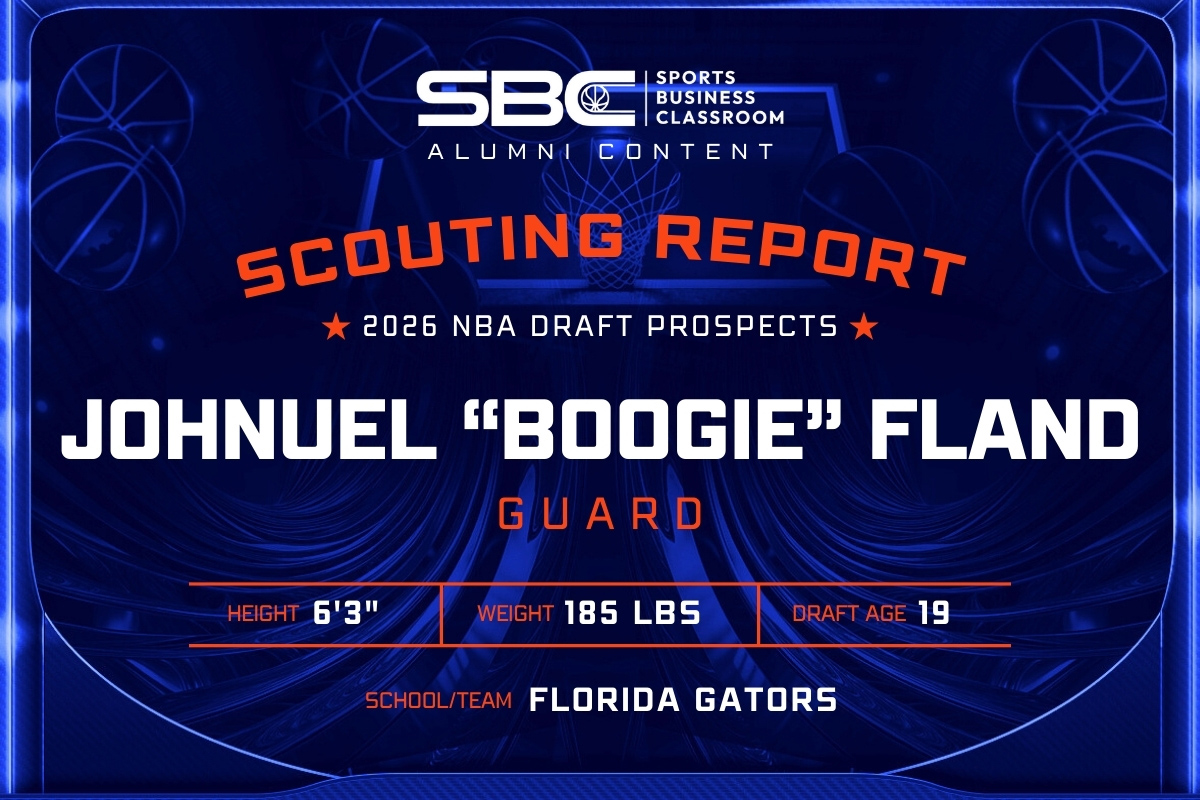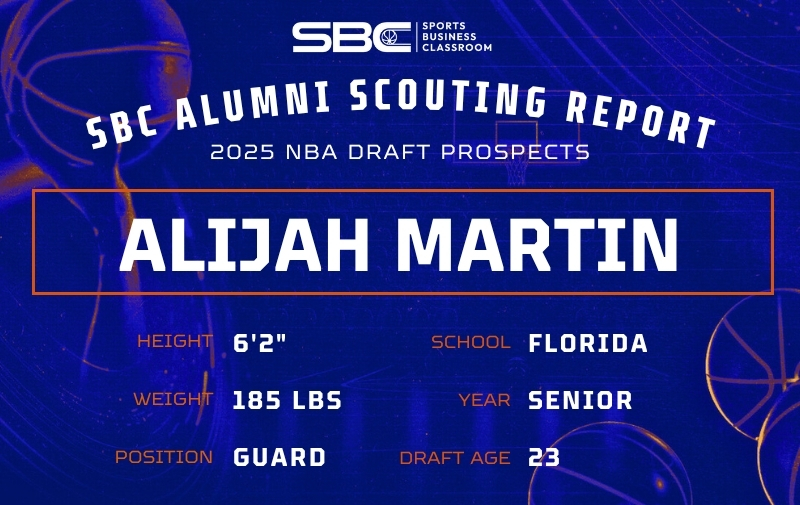
[The following scouting report is part of a series on potential 2023 draft prospects from Sports Business Classroom alumni.]
Andre Jackson Jr.
Frame: 6′ 6″, 210 lbs
Position: Wing
Team: Connecticut
2023 draft age: 21
Stats via: Barttorvik, ESPN
Offense
Jackson Jr. solidified his draft consideration with his tenacious playmaking and defense as one of the main catalysts during Connecticut’s championship run. He understands how to find offensive openings and finish strong at the rim.
Jackson is at his best when he creates for his teammate, leading his team in assists. He sets hard screens and facilitates for his teammates in multiple ways; Jackson can push in transition and use his height to pass out of the low and high posts.
He was third in the country amongst 125 high-major Division I wing guards with an assist percentage of 26.6 percent. Jackson’s offensive rating ranked 24th despite a lower (93rd ranked) usage rate of 16.5 percent.
He also tended to turn the ball over, with the sixth highest of 125 in turnover percentage (24.1). However, of the 50 Division I high major wing guards with the highest turnover percentage, only Justyn Mutts (Virginia Tech) had a better assist percentage. Jackson looks to make plays on offense by finding cutting teammates and spot-up shooters. He understands his role, has good vision, and uses a high basketball IQ to enhance his and his team’s offense.
He possesses a good floater and a soft touch around the rim, aiding much of his scoring. But his shooting from the perimeter went from 11.8 percent as a freshman to 36.1 percent (on 1.8 attempts) to 28.1 percent (on 2.5 per game) this past season. He has a low release set shot and limited range- defenders can back off, anticipate the pass, play the drive, and lock on to spot-up shooters.
His three-point shot needs an overhaul. Jackson is a good slasher and athlete, but defenders can play off him, similarly to how they play Draymond Green. Jackson needs to play in the right system; he brings energy and playmaking but struggles to create for himself.
Defense
Jackson is an aggressive and active defender with a great combination of size, speed, athleticism and strength to keep up with guards and wings along the perimeter and compete with forwards down low.
While his defensive stats will not jump off the page at 1.1 steals per game and 0.4 blocks per game, the intensity and hustle are in his game. As demonstrated in the NCAA tournament and throughout the season, Jackson’s defense is the backbone of his game. It will be a vital factor in how he can earn minutes during his rookie season despite his shooting woes and offensive shortcomings.
Jackson moves his feet well and uses size and quickness to agitate the opposition. A long wingspan allows Jackson to affect shots and passes. He is at his best when keeping his hands straight up and using his solid frame to body up his assignment. Jackson’s 3.9 fouls per 40 minutes demonstrate a tendency to play too aggressively or while out of position. He fouled out five times this season and committed at least three fouls in 20 of 36 games.
Just as Jaren Jackson Jr. with the Memphis Grizzlies proved to be an elite defender, despite a propensity to foul. Coaches will look for ways to teach Connecticut’s Jackson to play great defense without fouling, but his effort and commitment are noteworthy.
Jackson’s 6.2 rebounds per game were second on his team to big man Adama Sanogo. His defensive rebounding percentage of 16.7 ranked 15th of 125, highlighting his aggressive play style and ability to battle in the paint.
Jackson will seek to become one of the premier defenders from this draft class. Given his versatility, intensity, and athleticism, he has the tools to do so. Jackson takes pride in his defense; his ability to push in transition off a steal or rebound showcases his full-court speed and playmaking. While many second-round picks may struggle to earn minutes early in their rookie seasons, Jackson’s defense should provide an immediate impact off the bench, allowing his role to grow and expand throughout the year.
Looking Ahead
With a unique skillset, Jackson will be best utilized as an elite defender off the bench and a secondary playmaker on offense. Playing alongside good shooters will allow Jackson to move and cut to the rim, set screens, and find open teammates along the perimeter. Additionally, as teams may dare Jackson to shoot, playing with capable perimeter threats will allow space for Jackson to drive, work the paint, and offensive rebound.
Jackson’s defense may alleviate concerns many coaches have with this shooting. While his offense is questionable, his defense is not. He is an elite athlete fully committed on the defensive end, providing a safe floor for any team who takes him—likely in the second round.
The jump shot needs tweaking, but if Jackson’s sophomore season, when he shot 36.1 percent from deep, wasn’t an anomaly, his potential as a 3-and-D wing is scary. Unfortunately, the free throw percentage has dipped each year, falling below 65 percent this past season— leaving doubt that his shot will improve at the next level. But, with ideal size and great playmaking, Jackson can still be a threat offensively with his athleticism, passing, screening, and rebounding.
Jackson has a safe floor for a second-round pick as a secondary facilitator on offense and a versatile athlete on defense. He can push the ball and run the floor well in transition. While the lack of shooting progression will cause reluctance for a team to select Jackson, his willingness to compete on both ends of the floor and contribute at a championship level should cement his value as a potential steal in the draft.







